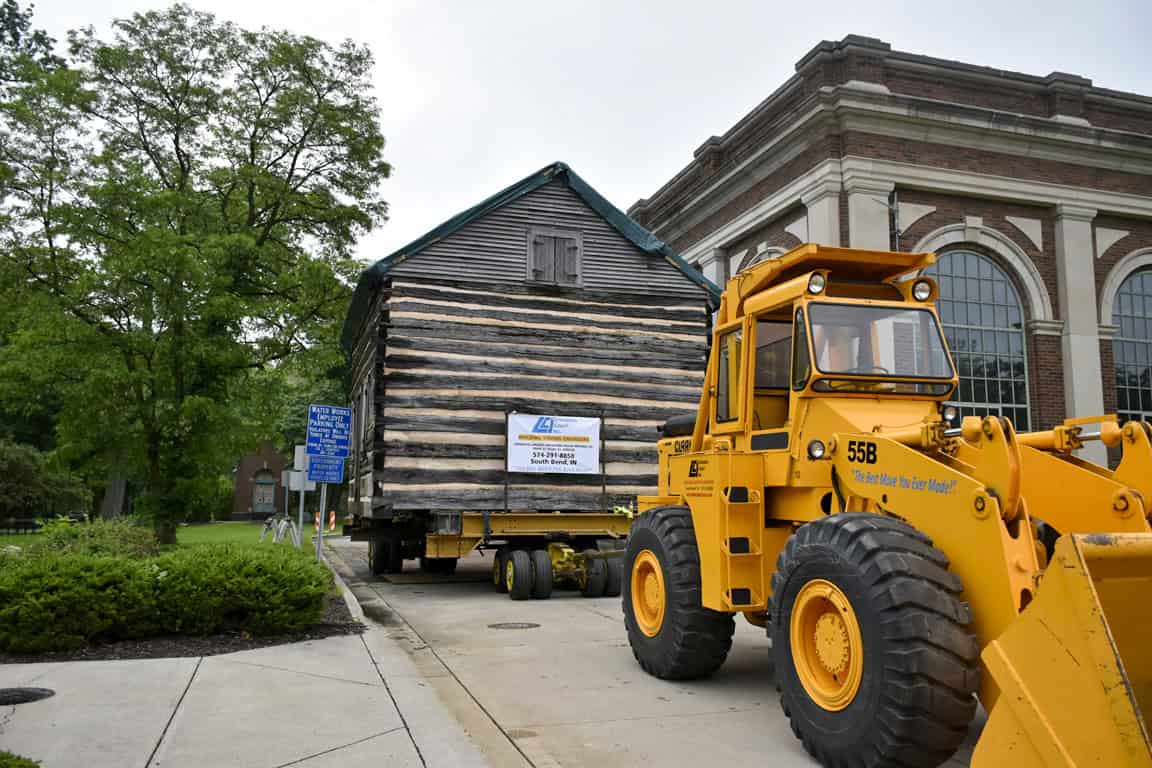

The story of the Navarre Cabin begins with the man who built it. Pierre Freischutz Navarre was the first person of European descent to settle in St. Joseph County. Navarre’s arrival played a significant role in the history of St. Joseph County, and his presence paved the way for the founding of the city of South Bend. Born in 1787 in Detroit, Michigan, he was an educated man of French ancestry, who came to the area in 1820 as an agent of John Jacob Astor’s American Fur Company, which strongly influenced the history of the Midwestern frontier. Navarre married a Potawatomi woman named Keshewaquay, who adopted the name Angelique. Along with their seven children, they lived in the cabin on the north side of the St. Joseph River, near what is now 123 W. North Shore Drive. In 1835, Navarre’s family were forcibly removed to Kansas along the Trail of Death, along with many other local native people.
One of three historic homes in The History Museum’s collection, the Navarre Cabin holds a distinguished place in St. Joseph County, Indiana. Built circa 1820, the cabin is the oldest structure in the community, home of the county’s first pioneer settler. In 1895, The History Museum acquired the cabin, rescuing it from demolition. The museum moved the cabin in 1904 to the southeast corner of Leeper Park East so that it could be better used to teach the history of the area’s pioneers. The cabin was relocated two more times in Leeper Park to accommodate expansion of the North Pumping Station, once in 1916 and again in 1954. In 2005, the Navarre Cabin was completely restored by The History Museum.
The cabin was moved for the fifth and final time to The History Museum campus in 2024 where it is in use as an interpretive site with special programming immersing visitors into pioneer times. The Homestead is being further developed to include additional structures and settings to become an even more immersive experience in 2026 and 2027.
